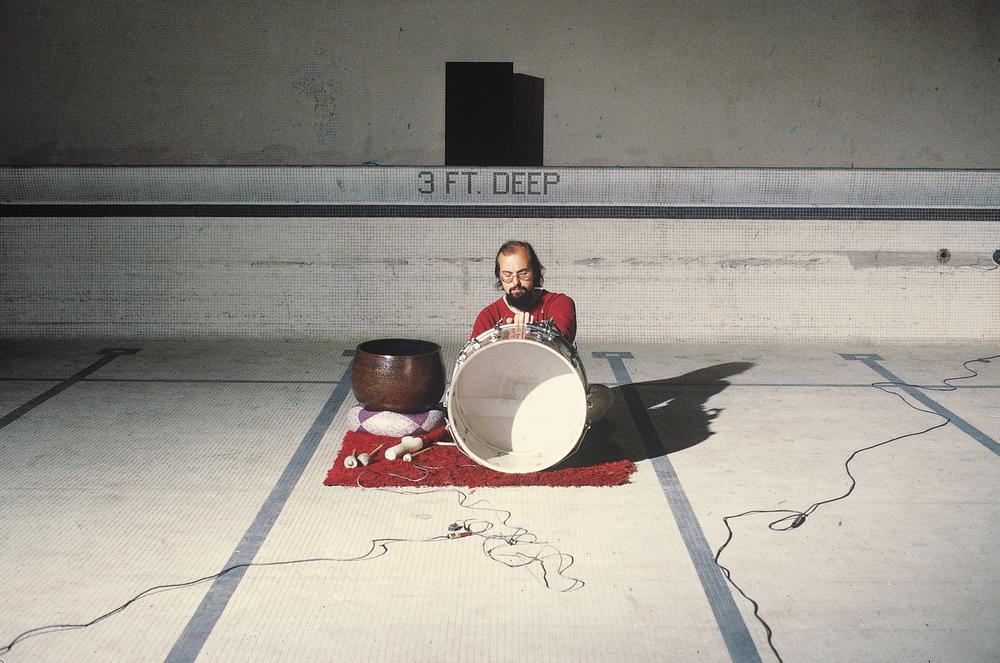Bill Viola. The Talking Drum
For video artist Bill Viola, sound is paramount. Even in his works without sound, the artist believes that silence has a tone, that it can be felt and understood “as a kind of chord.”1 He recalls as a child listening to the sound of cars outside the window of his New York apartment and becoming acutely aware of background noise—not particularly loud sounds but rather the constant soundtrack of traffic, wind, electricity moving through wires: a tonal “undersound,” as Viola has called it.2 When he entered Syracuse University in 1969, Viola studied electronic music in his first year. But it was his work with musical pioneer David Tudor that inspired a model for how Viola would use video to record and manipulate both sound and image.3 After Viola received his BFA in 1973, he performed in Tudor’s celebrated Rainforest IV (1974), a composition of noises emitted from hanging sculptures and found objects in which sound had an environmental presence. Viola further pushed this idea in his experimental audio performance The Talking Drum (1979), which took place at the bottom of an empty swimming pool. “My main interest was the science of the acoustic, the behavior of sound in space,” Viola described in an interview. “I distinctly remember feeling that I wanted to see the emptiness of space, to become the space and be extended out into every part of it all at once.”4
Bill Viola, interview with Christian Lund, London, 2011, featured in “The Tone of Being,” Louisiana Channel, Louisiana Museum of Modern Art, Humlebaek, Denmark, posted April 18, 2013, video, 6:01 minutes, available at youtube.com/watch?v=zkeG4GJQ-H4. ↩︎
Bill Viola, interview with Christian Lund, London, 2011, featured in “The Tone of Being,” Louisiana Channel, Louisiana Museum of Modern Art, Humlebaek, Denmark, posted April 18, 2013, video, 6:01 minutes, available at youtube.com/watch?v=zkeG4GJQ-H4. ↩︎
John G. Hanhardt, Bill Viola, ed. Kira Perov (New York: Thames & Hudson, 2015), 14. ↩︎
Bill Viola, interview with Akio Obigane, quoted in Francesco Dama, “Rediscovering Bill Viola’s Forgotten, Resonant Sound Compositions,” Hyperallergic, November 2, 2015, available at hyperallergic.com/245386/rediscovering-bill-violas-forgotten-resonant-sound-compositions/. ↩︎
